|
Return to the Fall 2022 Newsletter
News from Schools
NOVA SOUTHEASTERN UNIVERSITY
In light of the recognition of oral medicine as a specialty by the ADA, and in order to be progressive, the name of the Department of Oral Medicine and Diagnostic Sciences has been changed to “The Department of Maxillofacial Medicine.” The department currently boasts seven board-certified specialists and one with an AAOM fellowship credential.
Section Oral and Maxillofacial Pathology
Section Head: Lynn W. Solomon, D.D.S., M.S.
Section Oral and Maxillofacial Radiology
Section Head: Maritzabel Hogge, D.D.S, M.S., M.S.M.Ed.
Section Oral Medicine
Section Head: Lina M. Mejia, D.D.S, M.P.H., F.I.C.D
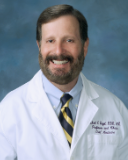 Michael A. Siegel, DDS, MS, FDS RCSEd Michael A. Siegel, DDS, MS, FDS RCSEd
Assistant Dean for Faculty
Professor and Chair
Department of Maxillofacial Medicine
College of Dental Medicine
Nova Southeastern University
UNIVERSITY OF PENNSYLVANIA SCHOOL OF DENTAL MEDICINE
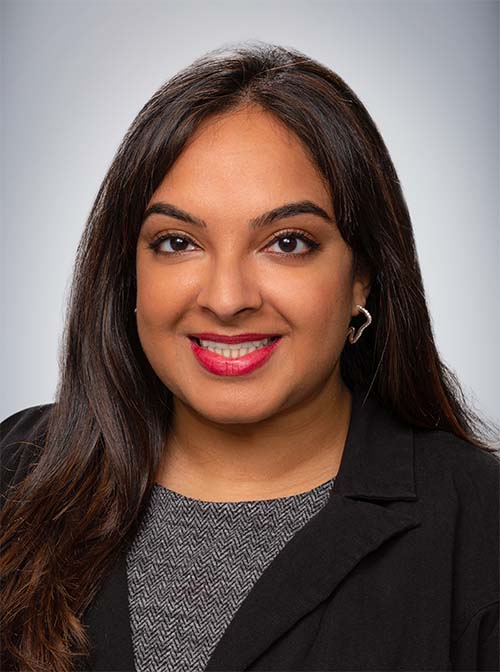
Roopali Kulkarni, D.M.D., M.P.H.
Name of the Program Director/Department Chairman/Division Director:
- Program Director: Takako I. Tanaka, DDS, RCSEd.
- Assistant Program Director: Roopali Kulkarni, DMD, MPH
- Department Chairman: Thomas Sollecito, DMD, RCSEd.
Calendar of Upcoming Events:
- November-December 2022 – Residency Interviews
Outgoing/Incoming residents:
Current Residents:
PGY-2
- Dr. Payam Mirfendereski, Co-Chief
- Dr. Sara Aldosary, Co-Chief
- Dr. Eman Alamodi
- Dr. Jeffrey Goetz
PGY-1
- Dr. Afrah Alfaifi
- Dr. Naser Alkandari
- Dr. Maya Ramachandran
- Dr. Heba Turkstani
- Dr. Natalia Trehan
More information:
- Thomas P. Sollecito One Health Fellowship: the fellowship is a program designed for veterinary dentists with a special interest in oral medicine or oral medicine specialists with a research interest in companion animal oral medicine. The program includes faculty members from across the department who lecture on topics within the realm of oral medicine.
- Dr. Roopali Kulkarni, Instructor, Department of Oral Medicine, was selected to represent oral medicine on the national American Dental Education Association (ADEA) Council of Advanced Education Programs.
WEST VIRGINIA UNIVERSITY SCHOOL OF DENTISTRY
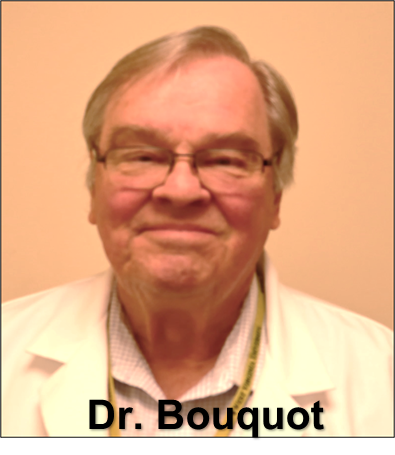
Jerry Bouquot, DDS, MSD
Clinical Professor & Past Chair, Department of Diagnostic Sciences
School of Dentistry, West Virginia University
Emeritus Professor & Past Chair, Department of Diagnostic & Biomedical Sciences,
University of Texas School of Dentistry, Houston, Texas
The Most often Cited Scientists in the Maxillofacial Diagnostic Fields
Seventy Oral & Maxillofacial Pathologists, Oral Medicine specialists and Head and Neck Pathologists have been included in a listing of the top 2% most cited scientists in the world. This 2021 listing, created by Stanford University, used digital data available, through 2020, from the ~10,000,000 known scientists in the world today; it includes many who have died within the last two decades as well. The listing is an Excel file and includes just over 186,000 scientists from all fields of research, not just dentistry or maxillofacial researchers. Self-citations are not included in the numbers.
In this list, a numerical rank of 1 refers to the most often cited scientist in the world (none of the Maxillofacial Diagnosticians made it into the top 3,000, but Crispian Scully, of London, got close). The listed country for each individual is the last country they worked in; several were born and worked in one or more other countries prior to their last move. It is difficult to determine, but it appears that only ~1,400 of the top 2% of cited authors are affiliated with dental schools. Here is a link to the Excel file of the entire group of worldwide cited scientists; it is in the BouquotToGo Dropbox and is 75M in size, so it must be downloaded to view.
This is, by far, the most comprehensive listing from the cited scientific literature, and is an update of one published by Stanford University several years ago. It is interesting, in our world of “influencers,” to see who is on the list, but keep in mind that influence derives from much more than literature citations. Some of the most influential scientists in the world had very few “followers” because they work in such esoteric, even futuristic fields. Influence also arises from teaching, meeting presentations, textbooks and administrative work with scientific groups or institutions. It seems obvious to the present author that, as a group, maxillofacial diagnostic workers seem to be making quite a significant contribution to both education and research, in both dentistry and medicine, whether on the list or not.
Following is a table of the Maxillofacial Diagnosticians, in alphabetical order, on the list of the top 2% most cited scientists in the world (some have a numerical listing above 186,000; the reason for this is unknown):
|
|
Name of Scientist
|
# Rank,
in top ~186,000, Worldwide
|
% Rank Amongst ~10M Scientists
|
Country of Major Activities
|
|
1
|
Allen, Carl
|
181,720
|
1.82%
|
USA
|
|
2
|
Atkinson, Jane
|
167,130
|
1.67%
|
USA
|
|
3
|
Benoliel, Rafael
|
160,664
|
1.61%
|
Israel
|
|
4
|
Bishop, Justin *
|
44,784
|
0.45%
|
USA
|
|
5
|
Bouquot, Jerry
|
119,428
|
1.19%
|
USA
|
|
6
|
Brannon, Robert
|
101,652
|
1.02%
|
USA
|
|
7
|
Buchner, Amos
|
53,392
|
0.53%
|
Israel
|
|
8
|
Cawson, Rodrick
|
194,984
|
1.95%
|
England
|
|
9
|
Chainani-Wu, Nita
|
186,336
|
1.86%
|
USA
|
|
10
|
Challacombe, Stephen
|
43,579
|
0.44%
|
England
|
|
11
|
Dworkin, Samuel
|
17,087
|
0.17%
|
USA
|
|
12
|
Elad, Sharon
|
197,243
|
1.97%
|
USA
|
|
13
|
Eliav, Eli
|
232,492
|
2.33%
|
USA
|
|
14
|
Ellis, Gary
|
97,032
|
0.97%
|
USA
|
|
15
|
Epstein, Joel
|
8,510
|
0.90%
|
USA
|
|
16
|
Eversole, L. Roy
|
37,572
|
0.38%
|
USA
|
|
17
|
Farah, Camile
|
146,653
|
1.47%
|
Australia
|
|
18
|
Ferlito, Alfio *
|
12,865
|
0.13%
|
Italy
|
|
19
|
Flaitz, Catherine
|
80,377
|
0.80%
|
USA
|
|
20
|
Fox, Philip
|
26,902
|
0.27%
|
Italy
|
|
21
|
Gardner, David
|
54,217
|
0.54%
|
USA
|
|
22
|
Glick, Michael
|
98,541
|
0.99%
|
USA
|
|
23
|
Gnepp, Douglas *
|
38,680
|
0.39%
|
USA
|
|
24
|
Gorlin, Robert
|
9,307
|
0.93%
|
USA
|
|
25
|
Greenberg, Martin
|
214,446
|
2.14%
|
USA
|
|
26
|
Greenspan, Deborah *
|
57,396
|
0.57%
|
USA
|
|
27
|
Greenspan, John
|
57,151
|
0.57%
|
USA
|
|
28
|
Grushka, Miriam
|
139,779
|
1,40%
|
USA
|
|
29
|
Johnson, Newell
|
23,413
|
0.23%
|
Australia
|
|
30
|
Jordan, Richard
|
101,071
|
0.10%
|
USA
|
|
31
|
Lalla, Rajesh
|
148,865
|
1.49%
|
USA
|
|
32
|
Lehner, Thomas
|
20,767
|
0.03%
|
England
|
|
33
|
Lingen, Mark
|
58,920
|
0.59%
|
USA
|
|
34
|
Little, James
|
192,841
|
1.93%
|
USA
|
|
35
|
Lockhart, Peter
|
42,188
|
0.42%
|
USA
|
|
36
|
Lozada-Nur, Francina
|
203,284
|
2.03%
|
USA
|
|
37
|
Ludlow, John
|
105,375
|
1.05%
|
USA
|
|
38
|
Miller, Craig
|
87,225
|
0.87%
|
USA
|
|
39
|
Muller, Susan
|
109,871
|
1.10%
|
USA
|
|
40
|
Navazesh, Mahvash
|
79,736
|
0.80%
|
USA
|
|
41
|
Neville, Brad
|
184,115
|
1.84%
|
USA
|
|
42
|
Okeson, Jeffrey *
|
79,125
|
0.79%
|
USA
|
|
43
|
Pindborg, Jens
|
33,258
|
0.33%
|
Denmark
|
|
44
|
Polverini, Peter
|
22,980
|
0.23%
|
USA
|
|
45
|
Rodu, Brad
|
131,339
|
1.31%
|
USA
|
|
46
|
Redman, Robert
|
187,064
|
1.87%
|
USA
|
|
47
|
Rhodus, Nelson
|
95,395
|
0.95%
|
USA
|
|
48
|
Sciubba, James
|
57,882
|
0.58%
|
USA
|
|
49
|
Scully, Crispian
|
3,048
|
0.03%
|
England
|
|
50
|
Shear, Mervin
|
81,884
|
0.82%
|
South Africa
|
|
51
|
Shiboski, Caroline
|
165,639
|
1.66%
|
USA
|
|
52
|
Ship, Jonathan
|
26,518
|
0.27%
|
USA
|
|
53
|
Silverman, Sol
|
26,721
|
0.27%
|
USA
|
|
54
|
Sklar, Gerald
|
83,858
|
0.84%
|
USA
|
|
55
|
Slootweg, Pieter *
|
27,442
|
0.27%
|
Netherlands
|
|
56
|
Sonis, Steve
|
6,368
|
0.64%
|
USA
|
|
57
|
Speight, Paul
|
34,075
|
0.34%
|
England
|
|
58
|
Streckfus, Charles
|
181, 312
|
1.81%
|
USA
|
|
59
|
Takata, Takashi
|
122,340
|
1.22%
|
Japan
|
|
60
|
Thompson, Lester *
|
13,380
|
0.13%
|
USA
|
|
61
|
Truelove, Edmond
|
160,333
|
1.60%
|
USA
|
|
62
|
Van Der Waal
|
12,362
|
0.13%
|
Netherlands
|
|
63
|
Waldron, Charles
|
82,010
|
0.82%
|
USA
|
|
64
|
Warnakulasuriya, S.
|
5,544
|
0.06%
|
England
|
|
65
|
Wenig, Bruce *
|
32,728
|
0.33%
|
USA
|
|
66
|
Witkop, Carl
|
63,250
|
0.63%
|
USA
|
|
67
|
Wong, David
|
4,841
|
0.05%
|
USA
|
|
68
|
Woo, Sook-Bin
|
102,296
|
1.02%
|
USA
|
|
69
|
Wright, John
|
195,088
|
1.95%
|
USA
|
|
70
|
Zadik, Yehuda
|
172,704
|
1.73%
|
Israel
|
* not trained in OMP or OM, but active in those fields (many are H&N pathologists with MD degrees)
Happy 50th Anniversary to a Wonderful and still Fresh WESTOP
For all my friends in oral medicine, I would like to let you know about a small but important oral path organization that was extremely significant in the decades-long push to take oral pathologists away from their microscopes and into the clinic. It changed the face of oral path and significantly enhanced our appreciation for clinical diagnostics, i.e., the realm of oral medicine. This organization, WESTOP (see below) was established in order to develop and exchange clinical teaching material…histopathology was not, and still is not, even necessary to present with the clinical photos that are exchanged by WESTOP participants. Below is a short write-up about this unique, small, vibrant organization.
50 years ago, in 1972, Drs. Alan Leider and Roy Eversole (both from San Francisco), organized a short Fall meeting for oral pathologists practicing/teaching in the western US states. It was modeled after the 5-year-old ESTOP (Eastern Society of Teachers of Oral Pathology) and took on a variant of the ESTOP name: The Western Society of Teachers of Oral Pathology. At that time, airfare was too expensive for western oral pathologists to attend a weekend ESTOP meeting in Baltimore, Maryland, but the West had so many mountain and beach resorts that it was thought that a WESTOP meeting in one of them would attract participants. It worked…very well. Most meetings, in fact, had participants not just from all over the western US, but from the Eastern US and from one or more foreign countries as far away as the Middle East and Asia.
WESTOP became a friendly source of continuing education and, significantly, the exchange of high-quality clinical teaching photos (in Kodachrome format until 2003). This was at a time when oral pathologists were typically seeing few patients in person, and so had very few clinical teaching examples. The exchanged clinical photos, it turned out, were often such excellent teaching examples that the organization eventually started calling them (tongue-in-cheek) “Legendary WESTOP Cases.” Until recently, meetings started on Sunday and ended Tuesday at noon and so took more time from work than ESTOP meetings. That, and the long distances involved, led to the number of participants being a third to half of those in ESTOP meetings.
From the very beginning, WESTOP followed all the same logic and traditions as ESTOP, primarily designed by Dr. Martin Lunin (University of Maryland) to counter the highly competitive and less “sharing” atmosphere of the larger AAOMP meetings. Both organizations followed the unwritten “Marty Lunin rules:”
1) There will be NO constitution or by-laws
2) The President for a year is whoever organizes the next meeting
2) Older participants MUST talk to younger ones
3) Everyone MUST be friendly to one another
4) No one could attend a meeting without bringing enough copies of good quality clinical cases, plus histories (sometimes photomicrographs), TO BE SHARED with all others at the meeting
5) Distributed cases could be used by any member for their own teaching, anyway they wished (but not for publication), without asking permission.
These two organizations changed the face of oral pathology and are, I believe, largely responsible for the present-day open and inclusive, even friendly, environment of the modern AAOMP meetings, as well as the much more frequent clinical evaluations of “real” patients performed by most oral pathologists today. AAOMP is such a different organization than the one I first joined in 1971 that it is almost hard for me to believe. To provide a cogent example of the AAOMP meeting atmosphere then: just before my mentor, Dr. Robert Gorlin (University of Minnesota) brought me into the Opening Reception my first year, he took me aside and told me “I am about to introduce you to some of the most brilliant assholes I’ve ever met.” He was right, competition was so much stronger back then, no one shared teaching material and older oral pathologists almost never spoke to newly trained ones. That is not to say the AAOMP meetings were not excellent, because they were. They provided wonderful and much needed scientific, medical, and histopathologic diagnosis information, and the competition helped to hone us all into becoming much better microscopic diagnosticians, able to compete in the world of medical pathology.
I did not attend WESTOP meetings until 2004, when I moved from West Virginia to the University of Texas, Houston. I was already well used to ESTOP (President in 1979), so was pleased to see the same atmosphere in WESTOP. By 2008 I was also President of WESTOP and remained for many years thereafter as the Secretary/Treasurer…the person who organized the meetings once the new President had picked a site. Dr. Darren Cox (University of the Pacific) replaced me after his Presidency, eight or nine years ago and has done a terrific job since. I cannot speak for earlier meetings, but since 2003, WESTOP participants have shared more than 936 PowerPoint cases, covering almost all aspects of oral disease. Many or most of these have become standard teaching material in our dental schools, and I have converted all of them to the PP case-based learning format of my Maxillofacial Center, where they remain available via Dropbox to any and all WESTOP participants.
Below is a photo of many of the participants in the recent 2021 WE
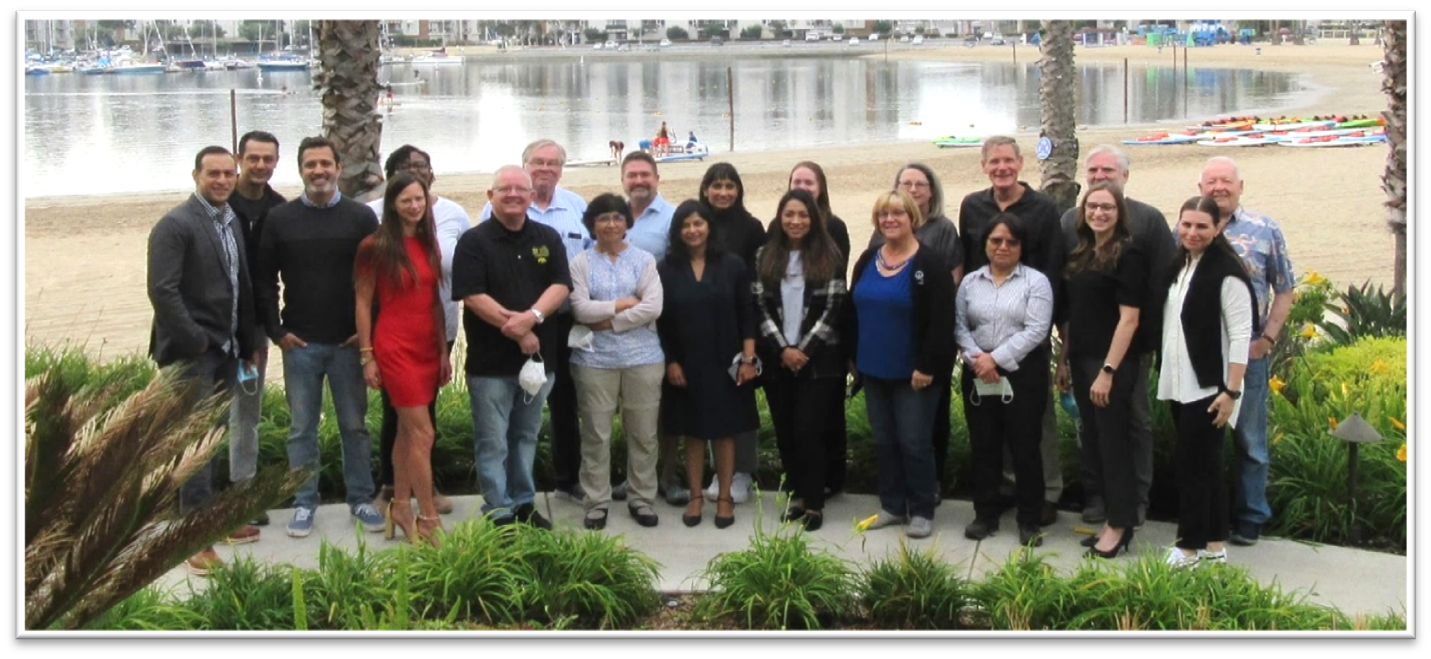
Back row: Ali Pourian, Parish Sedghizadeh, Bruno Jham, Rashida Wiley, Jerry Bouquot, Darren Cox, Hardeep Chehal, Allison Lee, Lynn Solomon, Lee Slater, Duane Schafer, Russ Christensen.
Front row: Audrey Boros, John Hellstein, Nagamani Narayana, Anu Grandhi, Madhu Shrestha, Liz Andrews, Li Ying Lin, Sarah Franklin, Laurel Henderson
I would like to mention one final WESTOP contribution. Starting in 2010, the organization has given an annual award to one or more oral pathologists, not necessarily members, for “outstanding lifetime achievement and innovation in the diagnostic sciences through research, service and educational efforts.” In keeping with WESTOP’s casual character, these awardees are usually referred to as “Western Wizards of Odd.”
Recipients are listed below:
|
Name of Wizard
|
Affiliation/Institution
|
Year Awarded
|
|
Vigneswaran, Nadarajah
|
University of Texas, Houston, Texas
|
2010
|
|
Ellis, Gary
|
University of Utah, Salt Lake City, Utah
|
2011
|
|
Melrose, Ray
|
Oral Pathology Associates, Los Angeles, California
|
2011
|
|
Rick, Gordon
|
Scripps Oral Pathology, La Jolla, California
|
2011
|
|
Bernstein, Mark
|
University of Louisville, Louisville, Kentucky
|
2011
|
|
Bouquot, Jerry
|
University of Texas, Houston, Texas
|
2011
|
|
Kessler, Harvey
|
Baylor College of Dentistry, Dallas, Texas
|
2012
|
|
Warnock, Gary
|
Johns Hopkins University, Baltimore, Maryland
|
2012
|
|
Leider, Alan
|
University of the Pacific, San Francisco, California
|
2013
|
|
Eversole, Roy
|
University of the Pacific, San Francisco, California
|
2013
|
|
Silverman, Bud (Sol)
|
UCSF, San Francisco, California
|
2013
|
|
Carpenter, Bill
|
University of the Pacific, San Francisco, California
|
2014
|
|
Kratochvil, Jim
|
University of Oregon, Portland, Oregon
|
2014
|
|
Sedano, Heddie
|
University of Minnesoita, Minneapolis, Minnesota
|
2016
|
|
Hellstein, John
|
University of Iowa, Iowa City, Iowa
|
2019
|
|
Slater, Lee
|
Scripps Oral Pathology, La Jolla, California
|
2021
|
|
Schafer, Duane
|
Virginia Commonwealth University, Richmond, VA
|
2022
|
A Complimentary Match of Oral Healthcare Providers
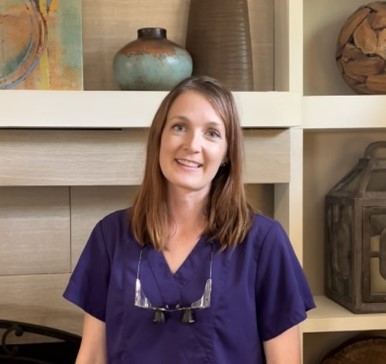 Elizabeth Southern Puette, RDH, MSDH, CTTS Elizabeth Southern Puette, RDH, MSDH, CTTS
According to the American Dental Education Association, ADEA’s advanced dental education programs resource, there are only six CODA recognized oral medicine programs in North America. As a dental hygienist, I feel extremely fortunate to work in a setting alongside an oral medicine specialist. I am able to see firsthand how the addition of this specialty to the dental team, improves access to oral care and also oral health and overall body wellness patient outcomes.
As faculty in the West Virginia School of Dentistry (WVU SOD), Department of Dental Hygiene, I am thrilled that our students have the opportunity to be mentored by an oral medicine specialist and gain experiences that reinforce the importance of collaborative care between dental and medical healthcare teams. Because our dental hygiene department is integrated into a multi-specialty dental school, hygiene students collaborate with WVU SOD dentists in obtaining chairside consults from specialties such as oral medicine. For example, the attending faculty dentist directs the dental hygiene student to consult oral medicine specialist, WVU SOD faculty, Juan Bugueno, DDS, MS., Diplomate in the American Board of Oral Medicine. Dr. Bugueno is able to provide the chairside consult for indications such as mucosal lesions or orofacial pain and evaluate for symptoms such as taste changes or xerostomia to help identify oral manifestations of systemic infectious disease. The hygienist is an integral part of the referral process; this further enhances our clinical decision-making, care plan development, documentation skills and reinforces head and neck anatomy concepts. An appointment for a biopsy or further evaluation, CBCT or other radiographs, or testing may be recommended.
Referrals to other dental specialties or interprofessional teams such as occupational therapy, the patient's primary care doctor or physician specialty are often indicated.
Recently, Dr. Bugueno provided a lab demonstration to 23 pre-clinical, sophomore dental hygiene students. This was a fantastic opportunity to see didactic concepts applied to the clinical setting by an oral medicine specialist- putting the treatment plan puzzle together based on a thorough medical history review, patient interview, review of habits, review of symptoms and examination of the head and neck structures are considered during the oral medicine specialists’ examination and treatment planning process.
From the perspective of a dental hygienist clinician, having an oral medicine specialist on our team is of great value to both dental hygiene students and dental students. Students can assist and observe procedures such as biopsies, salivary gland disorder therapies, excision of encapsulated tumors such as those encroaching on the maxillary sinus, and more. Dental hygienists complement the oral medicine team by providing specialized dental hygiene care and oral hygiene recommendations for patients at a higher risk for pathology and dental disease. WVU SOD oral medicine specialist Dr. Juan Bugueno provides a service for patients undergoing cancer treatments to receive modified care, with a significant focus on patient education regarding oral side effects related to oncologic treatments. Hygienists are essential members of the treatment team. For example, a patient who presents with radiation therapy-related caries provides a challenging and rewarding opportunity for an RDH to develop a multi-stage dental hygiene care plan that brings complex challenges to the dental hygiene clinician – challenges that promote lifelong learning and enhancement of clinical decision-making skills. Furthermore, by working closely with the oral medicine specialist and oncology team, the hygienist has the opportunity to improve patient outcomes and patient quality of life.
Working alongside an oral medicine specialist increases access to care. Oral medicine specialists often collaborate with medical specialists in hospital settings resulting in value to dental care as part of whole-body health. Patients with complex medical issues can find a dental home that allows for close interconnection between their medical physician and their oral medicine dentist. The dental hygienist often serves as a liaison between providers. Certifications such as certified tobacco specialist, myofunctional specialist, and expanded scope of practice in many states further enhance the dental hygienist’s role in oral rehabilitation for this patient population.
Oral medicine specialty contributes to the dental hygienist’s ability to provide community outreach. WVU SOD recently held our second annual oral cancer screening event. WVU SOD Diagnostic Sciences faculty Juan Bugueno DDS oral medicine specialist and Chair S. Bryan Whitaker DDS Oral and Maxillofacial Pathologist, and I collaboratively mentored a senior dental hygiene student, Jodi Drumheller, in planning and implementing the event. Volunteer dental students performed free oral cancer screenings. Volunteer dental hygiene students provided education on topics related to tobacco cessation, oral cancer prevention, catching cancer early, and HPV and oropharyngeal cancer. It was a great opportunity to serve the community and to exemplify how dental specialists work collaboratively to educate patients and provide the highest standard of care.
I am grateful that we hygienists can work alongside attending oral medicine specialists as part of the multidisciplinary team of providers. To see the collaboration between medical specialists and our oral medicine dentist experts, and as a result, participate in further collaboration with appropriate dental specialties within our school of dentistry, is to witness true comprehensive patient care.
More About Liz Puette
Liz is an assistant professor in the Department of Dental Hygiene, WVU School of Dentistry. She received her BS and MS degree from Old Dominion University in Norfolk, Virginia. She is a member of the WV Mountains of Hope Cancer Coalition and is Chair-elect of the MOH Early Detection Subcommittee. Liz previously served on the 2021-2025 WV Cancer Plan Committee and was actively involved in developing the new WV Cancer Plan. She is passionate about reducing the burden of oral and oropharyngeal cancers in WV, which includes educating the community and healthcare professionals on the relationship between HPV and cancer. Her previous work history includes serving as a registered dental hygienist in private practice, Mon County Health Department Dentistry and public health volunteer opportunities, and a dental hygiene educator.
|
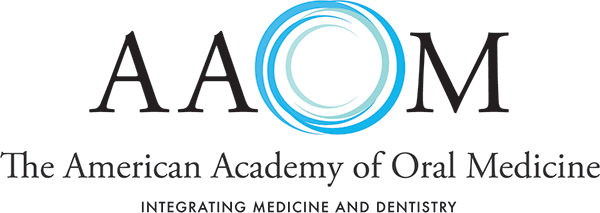
 Michael A. Siegel, DDS, MS, FDS RCSEd
Michael A. Siegel, DDS, MS, FDS RCSEd


